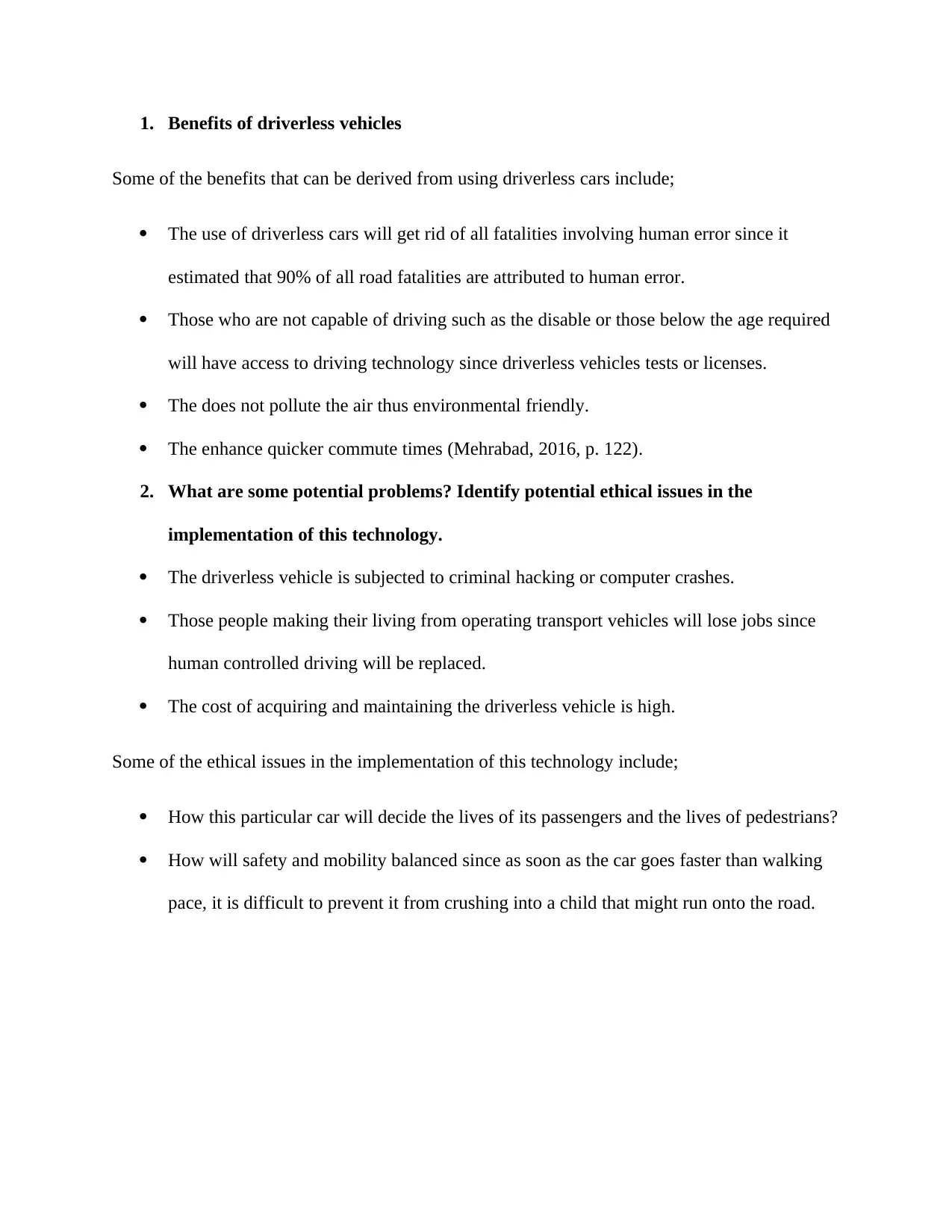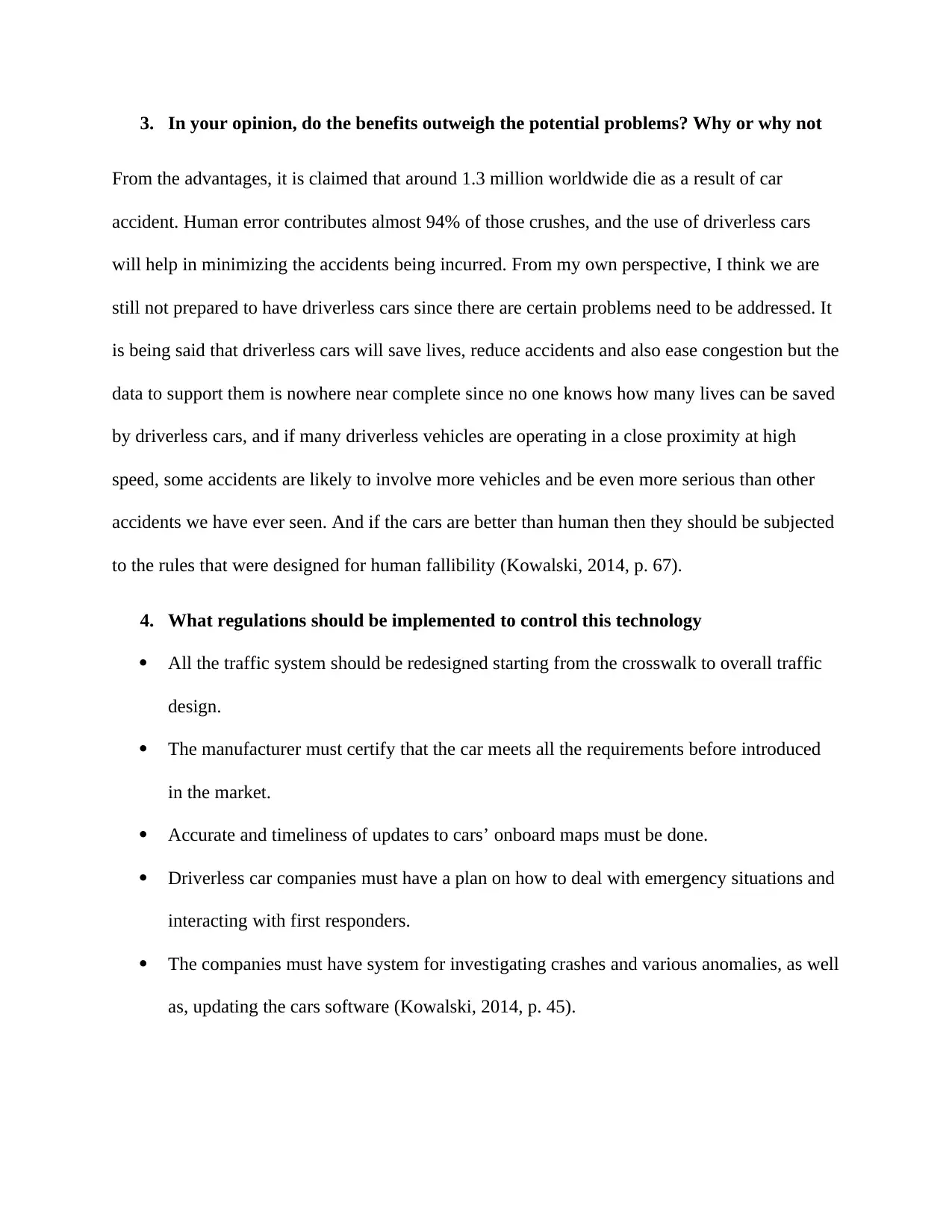Driverless Car Technology: Regulations, Benefits, and Challenges
VerifiedAdded on 2023/04/20
|4
|596
|249
Essay
AI Summary
This essay discusses the potential benefits and problems associated with driverless vehicles, including the reduction of accidents caused by human error, increased accessibility for those unable to drive, and environmental benefits. It also addresses potential issues such as criminal hacking, job displacement, and high costs. Ethical considerations are raised, particularly regarding how driverless cars should prioritize lives in unavoidable accident scenarios. The essay argues that while driverless cars have potential, significant challenges and safety concerns need to be addressed before widespread adoption. It suggests implementing regulations such as redesigned traffic systems, mandatory manufacturer certifications, timely map updates, and comprehensive emergency response plans. Desklib offers similar solved assignments and past papers for students.
1 out of 4











![[object Object]](/_next/static/media/star-bottom.7253800d.svg)